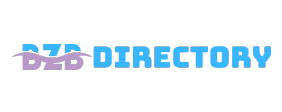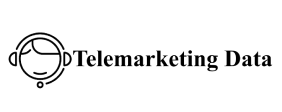How to Create a Target Audience Portrait
The goal of the primary audience analysis is to determine who your primary target audience is, as well as the secondary target audience – the influencers who influence the primary target audience. In this article, we will look at what the primary audience analysis should look like.
December 8, 2021
0
4 min.
How and When to Start Audience Analysis
It is most logical to conduct such an analysis following the situational analysis of your business or project. It is worth involving communications specialists and product managers. Without all these anglicisms, then you need people who:
collect and analyze socio-demographic statistics,
using surveys, focus groups or at least analysis of social networks/forums/search queries will understand the psychology of the selected group,
identify barriers and incentives for using your product/service,
draw conclusions on how to communicate library shop with the audience and convince them to choose you.
And don’t expect to spend a couple of days on everything. Such an analysis will take three to four weeks. You will understand that it has been carried out successfully when you have completed four tasks:
Determine your priority target audience.
Identify the secondary target audience that influences the choice of the primary one.
Describe the audience data.
Develop a profile/avatar for each audience so that they can see the characteristics of a living person in this set.
Steps for Initial Analysis
#1: Defining your potential audience
Brainstorm with your team and think about who faces the problem or need that your project addresses. At the first stage, don’t try to describe this group of people in great detail – unless your product is so niche that it will only be needed by a thousand people across the country. In the standard case, your potential target audience may be quite broad groups: for example, adult men or women, apartment owners, car drivers, etc.
#2: Selecting a Priority Audience
The priority audience is not always the audience that directly experiences the effect of the problem or some need. It is the audience whose behavior must change for your project to achieve its goal. The most obvious example is if you sell toys for children, they are your potential audience. But the decision to buy will ultimately be made by parents, so they become the priority target audience.
How to understand generations X, Y, Z, Alpha and build communication with them
Read also
How to understand generations X, Y, Z, Alpha and build communication with them
November 29, 2021
0
5 min.
#3: Defining the characteristics of the priority audience
Now that you have selected from all potential audiences those that your resources will cover, study and describe their characteristics.
Important: Include only those characteristics in the description that unite all people in your priority audience. Add characteristics that are important to you and exclude unnecessary ones.
Socio-demographic :
region, city, area/rural area,
sex or gender,
age range,
level of education,
sphere of activity,
nationality and language,
opinions on topics of general importance,
lifestyle,
character traits.
Communication channels :
which ones are used frequently and rarely,
what for general information,
which for information that concerns your project.
Other ways to reach your audience :
where they spend time,
what activities they participate in, etc.
Do you want to understand internet why doesn’t your company have a blog yet? marketing from A to Z and master a new profession in 4.5 months? It is absolutely possible. Come to our course ” Comprehensive internet marketing “. Send an application, special conditions are currently in effect.
#4: Defining the Peculiarities of Thinking
At this stage, you need to find out what the audience knows about the area you need, what they think about it, how they feel about it, and how they act. Answer questions about:
knowledge – what does the audience know about the problem/need?
attitude – what does she think about the problem?
emotions – what reactions does the problem cause in her?
risk perception – does the audience believe there are risks in the problem? (this increases their interest in the solution)
in her own image – how does she see her by lists role and goal in solving the problem?
self-efficacy – does she feel capable of solving the problem?
social norms and social support – how does the audience influence society’s attitude towards their problem, what level of support does they expect?
personal protection – does she think she can solve this problem herself?
#5: Identifying Barriers and Incentives
Important barriers may be habits, fears and negative experiences. Stimuli may include the constant availability of a product/service, its physical and price accessibility, and social approval.


